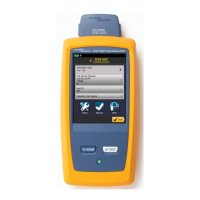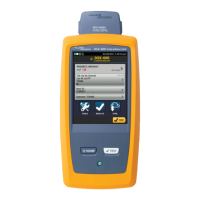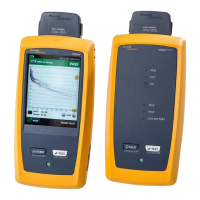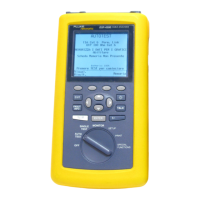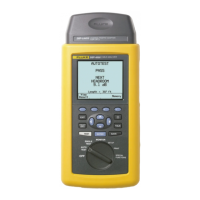Chapter 5: Certify Coaxial Cabling
About Splitters
117
About Splitters
If you get these results, there might be a splitter on the cable:
The tester cannot find the remote.
The tester looses communication with the remote. The test
might continue, then loose communication again as the
splitter interferes with the communication signal.
The length test shows End not found.
The resistance test shows an open.
The HDTDR plot shows a reflection that has an unusual shape.
Because splitters can cause unreliable test results, you should not
do tests through them.
Tests Without a Remote
You can do the length, resistance, and HDTDR tests without a
remote tester. Table 6 describes the effects of a remote on tests.
1 Attach a coaxial adapter to the main tester.
2 Make sure that the home screen shows the correct settings for
the job.
To make sure that other settings are correct, tap the test setup
panel, make sure the correct test is selected on the CHANGE
TEST SCREEN, then tap EDIT to see more settings. Table 5 on
page 106 describes the settings.
3 Connect the tester as shown in Figure 59.
4 To do an Autotest: Tap TEST on the main tester or press
on the main or remote tester. When the MEASURE button
shows, tap it to do the length and resistance tests, which do
not require a remote tester.
To do only the length or resistance test: On the home screen
tap TOOLS > Single Tests, then tap a test.
To do only the HDTDR test: On the home screen tap TOOLS >
Diagnostics, then tap HDTDR.
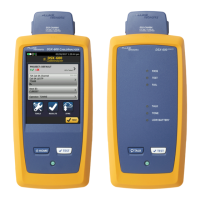
